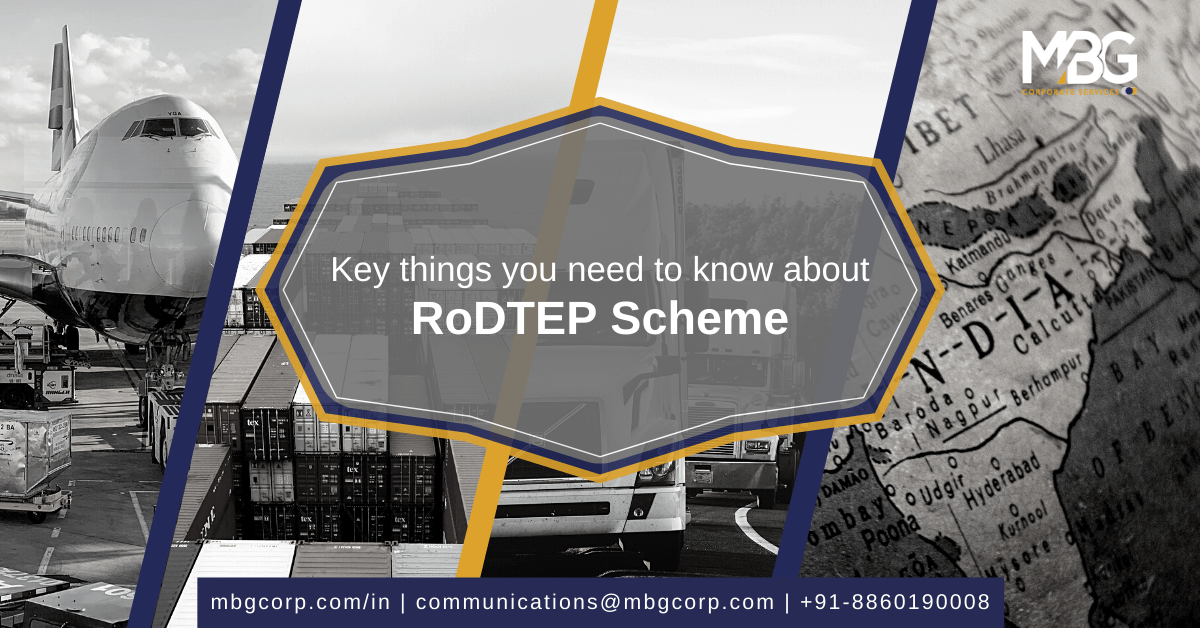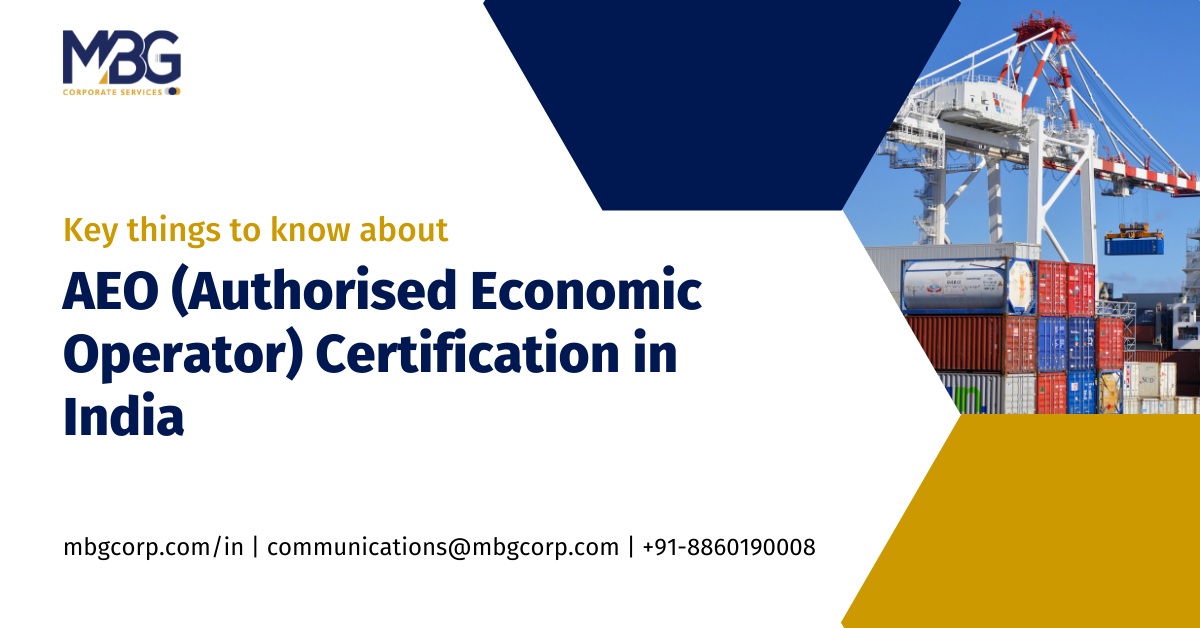Key things you need to know about RoDTEP scheme
December 28, 2021

What is RoDTEP Scheme?: Objectives of the scheme
“What is RoDTEP Scheme?” is a common question we get asked. The Remission of Duties and Taxes on Exported Products, or the RoDTEP scheme, is a benefit program for Indian exporters. After being announced the previous year by the Government of India with the objective of boosting Indian exports, the RoDTEP scheme came into effect from January 2021.
Under the RoDTEP scheme, Indian exporters are to be reimbursed the taxes and duties paid by them and built into their export price but not refunded to them under any other scheme. With this, the government seeks to level the playing field for Indian exporters by compensating them the embedded and non-refunded taxes which were inbuilt in the price of the export commodity adversely affecting their competitiveness in the international market.
The RoDTEP scheme approval was in the wake of the Coronavirus–driven slowdown as Indian exports dropped nearly 2% year-on-year in the April 2020 – January 2021 period with consecutive months of decline. It is expected that this scheme would redress that and help lift exports going forward. The RoDTEP scheme rates set by the government show its particular focus on products with currently low export volumes but with the potential to penetrate the international market.
What is RoDTEP Scheme?: Key Features and Benefits
The chief features and benefits of the RoDTEP Scheme are as follows:
- Reimbursement of taxes and duties non-refunded under any other schemes - such as fuel and toll taxes involved in the transportation of the export products, state duty on electricity used for their manufacture, stamp duty on import-export documentation, APMC’s Mandi taxes, and others.
- Digital / technology-driven – The actual rebate is in the form of transferable electronic scrips maintained on an electronic ledger. Digital platforms have been set up for faster and easier clearance along with an IT-based risk management system.
- WTO compliance – The RoDTEP Scheme is fully compliant with WTO international trade rules (and in fact, launched in order to meet their requirements – as explained in a later section below)
- The RoDTEP scheme rates of rebate vary from 0.5% to 4.3% of the FOB value of the exported products with a max value cap per exported product unit.
- Uniform, multi-sectoral scheme - The RoDTEP Scheme covers all sectors to ensure uniformity in all areas. The RoDTEP scheme rates have been set on 8555 different tariff lines. A dedicated committee is to decide when and to what extent the benefit will be introduced to each sector.
What is RoDTEP scheme is not essentially novel. It replaces the previous Merchandise Exports from India Scheme or the MEIS scheme.
What is MEIS Scheme?
What is MEIS scheme in effect was the older export incentive scheme. The MEIS scheme was devised to offset infrastructural inefficiencies and the associated costs for Indian exporters. However, in 2019, the World Trade Organisation (WTO) ruled it as a subsidy in 2019 and therefore a violation of WTO rules which prohibits governments from providing financial incentives to exporters.
Hence, the RoDTEP scheme was rolled out as a replacement compliant with WTO rules; under it, exporters are compensated for the non-creditable duty/tax costs (such as Electricity Tax, Stamp duty, Mandi Fee, Tax on fuel, etc.) that are embedded in the export goods, and not directly subsidized as such.
The key differences between the MEIS scheme and the RoDTEP scheme are as follows:
- The first difference relates to the very origin of what is RoDTEP Scheme versus MEIS – namely that while MEIS is not WTO rules-compliant, the RoDTEP scheme has been designed to be WTO-compliant.
- Under MEIS, an ad-hoc percentage of the export price could be used to pay for import duties. However, under the RoDTEP scheme, exporters get back a percentage of the price limited to the embedded taxes in the form of refunds.
- MEIS Scheme can be used to pay several components of Customs duties whereas the RoDTEP Scheme allows for the payment of the Basic Customs Duty only.
- While the RoDTEP scheme is based on actual taxes/duties embedded in the commodity only and has a maximum limit per product unit, MEIS incentive was higher on average.
- MEIS Scheme was in physical scrip- form, RoDTEP Scheme is electronic.
Eligibility Criteria for the RoDTEP Scheme
- The RoDTEP Scheme benefits apply to all sectors. Priority sectors are the labor-intensive ones that enjoyed benefits under the MEIS Scheme.
- The exports of both manufacturers and ExIm merchant traders are eligible, and so are Special Economic Zone Units and Export Oriented Units
- The scheme also applies to e-commerce exports through courier service
- There is no threshold turnover requirement to avail of the RoDTEP Scheme
- The exported goods must have been manufactured in India and must have India as the Country of Origin to be eligible.
- Re-exports are NOT eligible for the RoDTEP Scheme.
RoDTEP Scheme Use Process and Documentation
To avail of the scheme, exporters must make a claim in their shipping bill with a declaration beforehand. This claim is then processed and verified by the Department of Customs. After this, a ledger is created with the approved amount that can be accessed easily on the portal.
The steps involved are:
- Creating an account: Exporters must create an account in the ICEGate portal (icegate.gov.in)
- Creating an electronic credit ledger: Once the account is created, the exporter needs to log in using their class 3 Digital Signature Certificate (DSC) and create an electronic credit ledger by selecting the ‘RoDTEP option’ in the drop-down menu
- Declaration in the Shipping Bills: The exporter must then declare ‘RoDTEPY’ on the specific shipping bill of the shipment for which they want to avail of the RoDTEP scheme benefit. This is mandatory or else the reimbursement will not be done
- Claim processing and scroll generation: After the carrier files the Export General Manifest (EGM), the shipping bills are profiled RMS, the scrolls are generated, and the amount is made available as credits on the ICEGate portal.
- Generating Using Scrips: The portal credits are converted into credit scrips by the exporter who is given a unique Scrip ID. Entries are made in the credit ledger every time a new scrip is generated. The refund is credited and reflected in the exporter’s ledger account. It is available to use for the payment of the eligible duties and during imports or for transfer to any other importers.
The documentation required for the claim process are:
- Shipping bills
- Electronic Bank Realization Certificate (eBRC)
- Digital Signature Certificate (DSC) - Class 3
- Registration Cum Membership Certificate (RCMC)
If you are an exporter, our experienced Indirect Tax domain experts at MBG Corporate Services can help you through the entire RoDTEP claim process. Contact us to know more.







